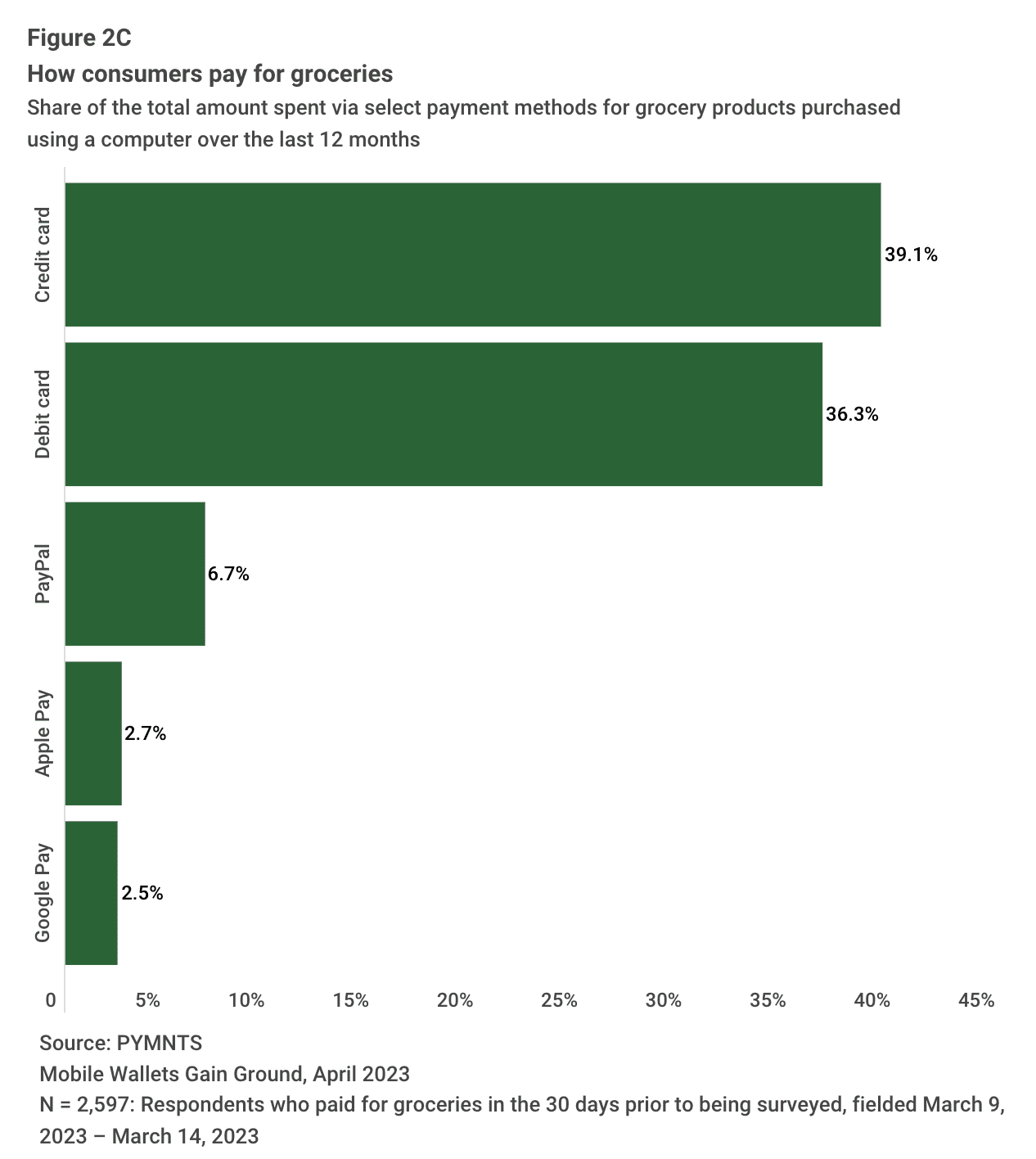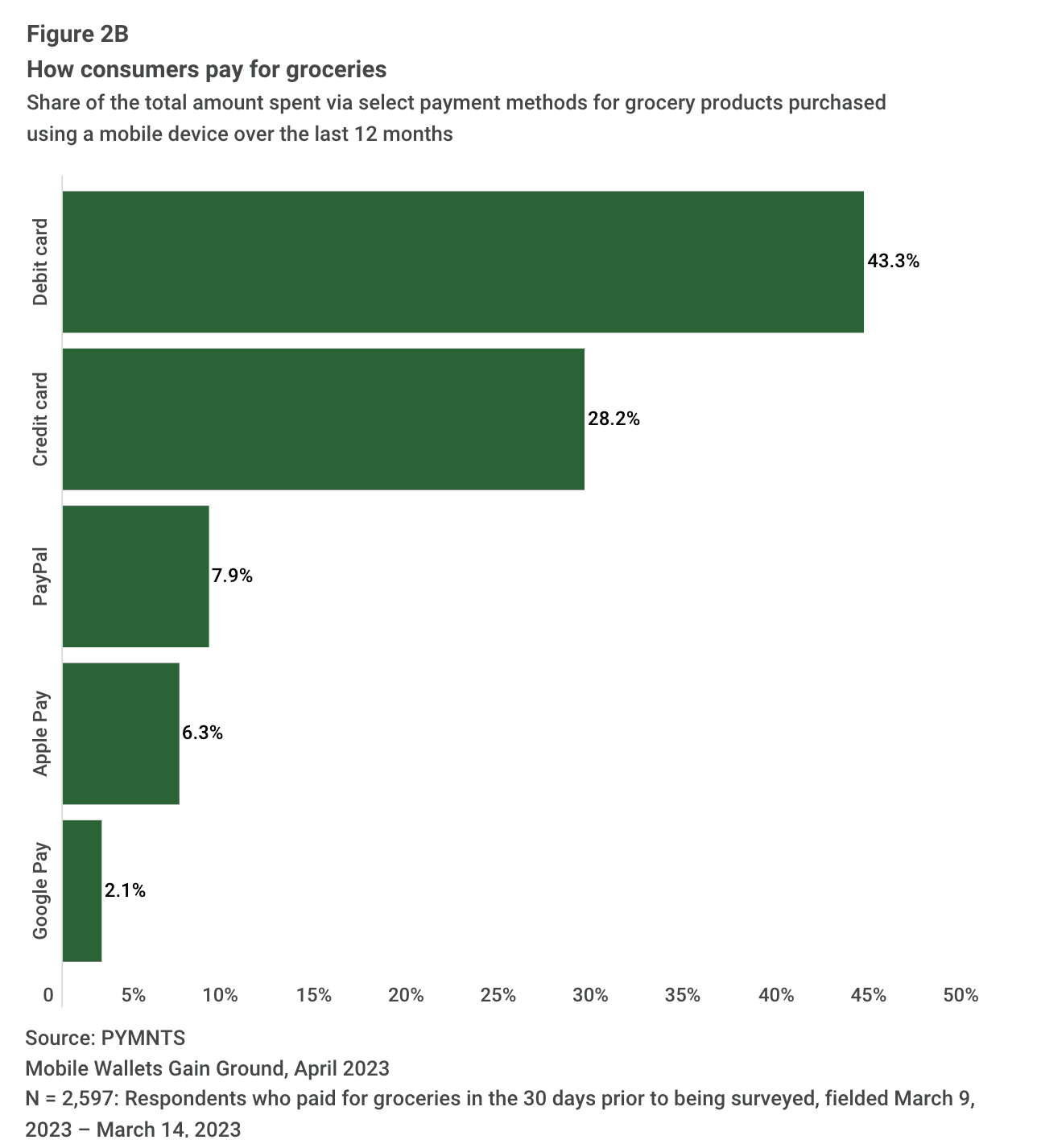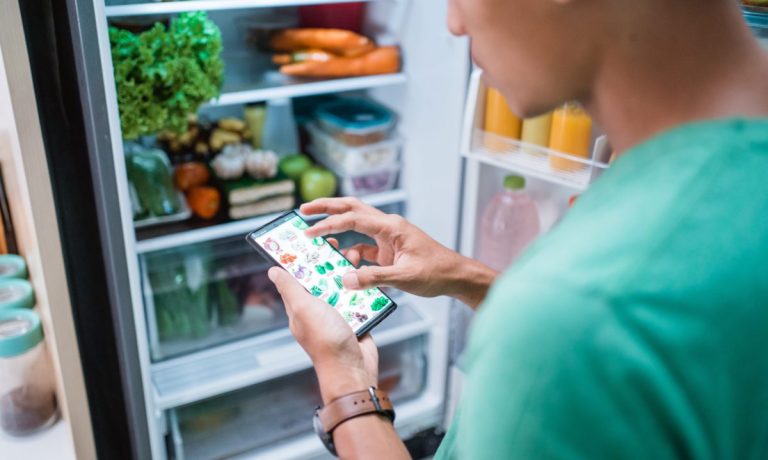Online grocery shoppers’ payment preferences differ considerably depending on their preferred device, PYMNTS research reveals.

For “Quarterly Payments Report: Mobile Wallets Gain Ground,” a new study independently produced by PYMNTS, which looks at consumer experiences and sentiments surrounding how they pay for their grocery and retail purchases, we surveyed nearly 2,600 U.S. consumers in March. The results reveal that online grocery shoppers who make purchases via their computer pay differently than those who do so via their mobile devices.
Specifically, the study found that a plurality of those who purchase groceries online via computer — 39% — pay for their products via credit card, while a slightly lower 36% do so via debit card. A moderate share of these shoppers — 7% — pay via PayPal, while very few computer users pay for their online grocery purchases via Apple Pay or Google Pay (only about 3% each).
The difference in credit card and debit card usage for mobile grocery purchases versus computer purchases is stark. While the two payment methods are far more popular than digital wallets across devices, there are major differences within credit and debit usage depending on the device.

For those consumers who place their eGrocery orders via smartphone, the most popular choice by a long shot is debit, with 43% choosing the payment method. In contrast, a far lower 28% pay for their mobile grocery purchases via credit card, while a comparable 8% share uses PayPal.
The disparity in Apple Pay usage between those who place their grocery purchases via computer versus via smartphone is not terribly surprising, with more than twice the share — 6% — paying for their mobile grocery purchases with the digital wallet than computer users. However, significantly more surprisingly, a smaller share of mobile users pays for their grocery purchase with Google Pay than of computer users, with only 2% doing so.
Advertisement: Scroll to Continue

